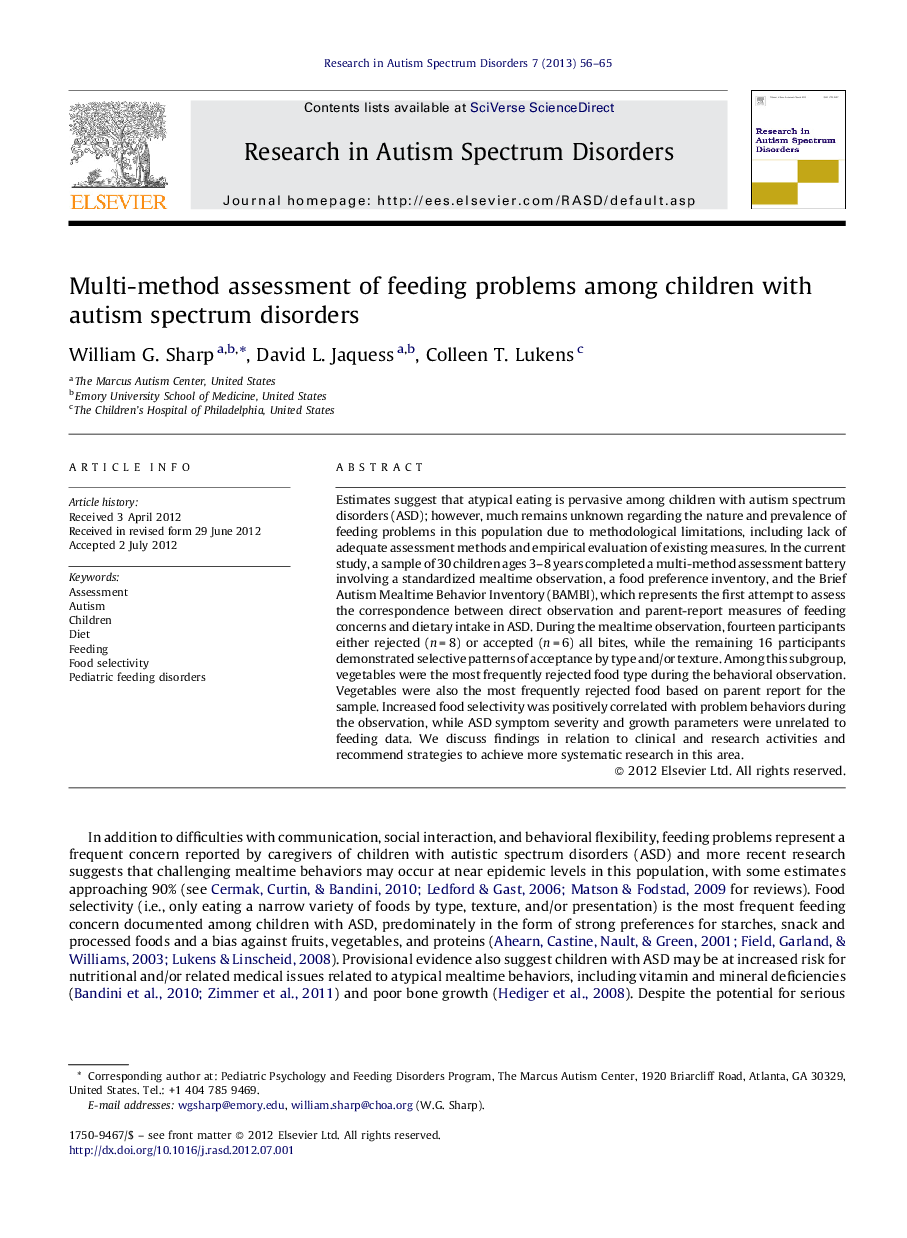| کد مقاله | کد نشریه | سال انتشار | مقاله انگلیسی | نسخه تمام متن |
|---|---|---|---|---|
| 370580 | 621876 | 2013 | 10 صفحه PDF | دانلود رایگان |

Estimates suggest that atypical eating is pervasive among children with autism spectrum disorders (ASD); however, much remains unknown regarding the nature and prevalence of feeding problems in this population due to methodological limitations, including lack of adequate assessment methods and empirical evaluation of existing measures. In the current study, a sample of 30 children ages 3–8 years completed a multi-method assessment battery involving a standardized mealtime observation, a food preference inventory, and the Brief Autism Mealtime Behavior Inventory (BAMBI), which represents the first attempt to assess the correspondence between direct observation and parent-report measures of feeding concerns and dietary intake in ASD. During the mealtime observation, fourteen participants either rejected (n = 8) or accepted (n = 6) all bites, while the remaining 16 participants demonstrated selective patterns of acceptance by type and/or texture. Among this subgroup, vegetables were the most frequently rejected food type during the behavioral observation. Vegetables were also the most frequently rejected food based on parent report for the sample. Increased food selectivity was positively correlated with problem behaviors during the observation, while ASD symptom severity and growth parameters were unrelated to feeding data. We discuss findings in relation to clinical and research activities and recommend strategies to achieve more systematic research in this area.
► We assessed feeding behaviors in a sample of children with autism using direct observation and parent-report measures.
► Most children during the mealtime observation exhibited low to moderate bite acceptance.
► Mealtime behaviors, including bite acceptance, crying and pushing the food away, corresponded with indirect measures of food selectivity.
► Degree of food selectivity appears to be an important indicator of acceptance or rejection of food.
Journal: Research in Autism Spectrum Disorders - Volume 7, Issue 1, January 2013, Pages 56–65